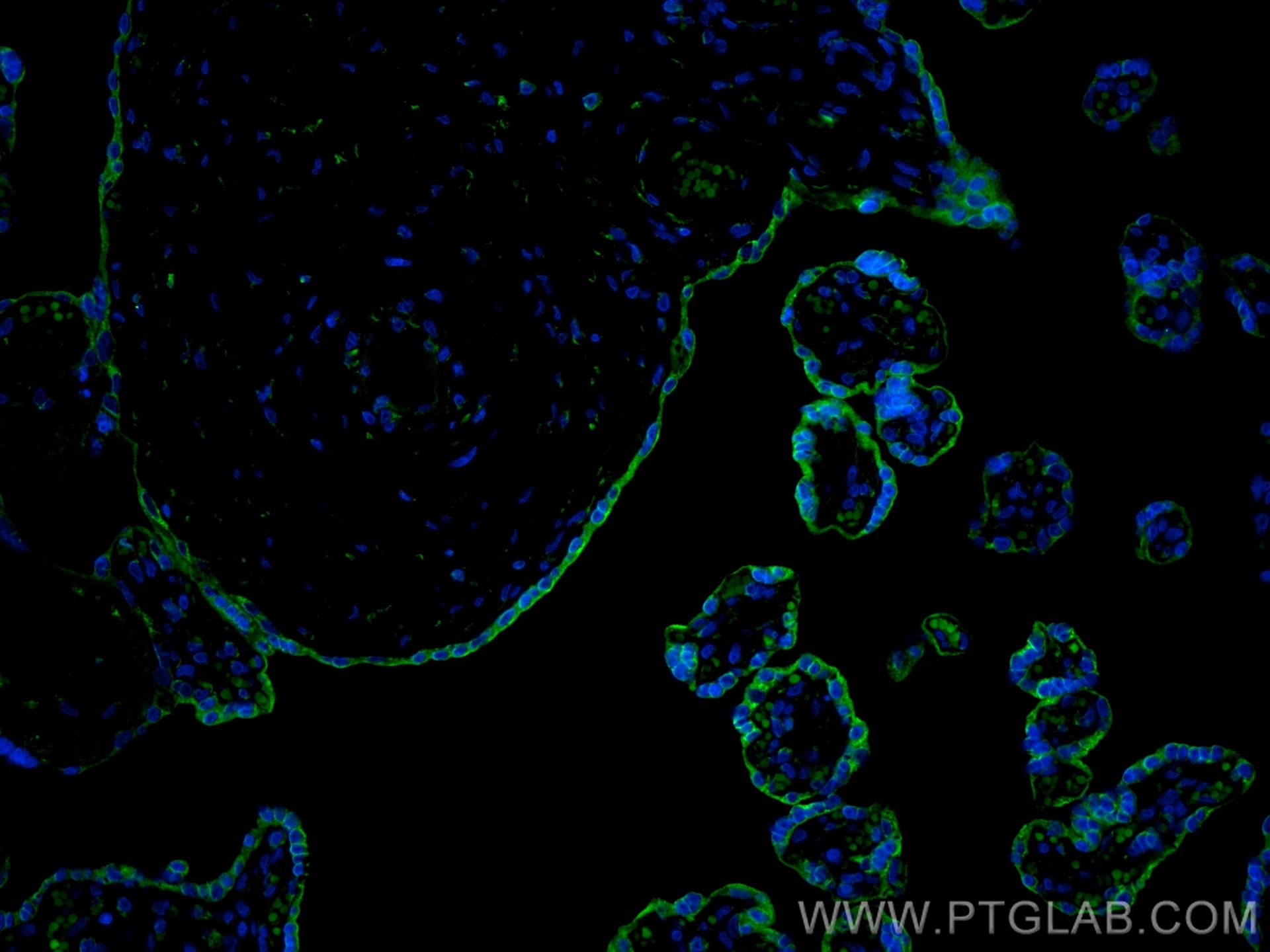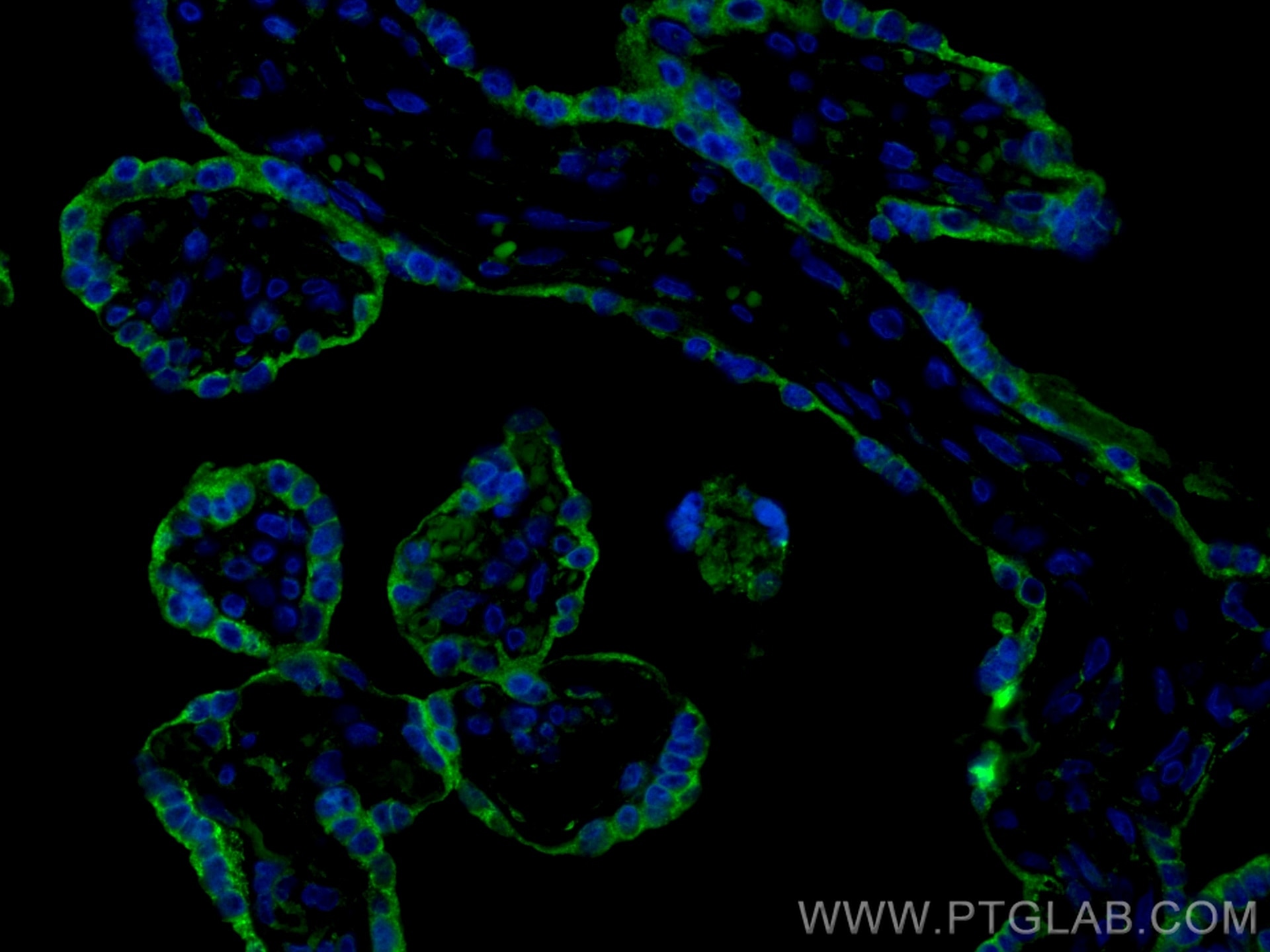Tested Applications
| Positive IF-P detected in | human placenta tissue |
Recommended dilution
| Application | Dilution |
|---|---|
| Immunofluorescence (IF)-P | IF-P : 1:50-1:500 |
| It is recommended that this reagent should be titrated in each testing system to obtain optimal results. | |
| Sample-dependent, Check data in validation data gallery. | |
Product Information
CL488-24849 targets VISTA in IF-P applications and shows reactivity with human samples.
| Tested Reactivity | human |
| Host / Isotype | Rabbit / IgG |
| Class | Polyclonal |
| Type | Antibody |
| Immunogen | VISTA fusion protein Ag20600 Predict reactive species |
| Full Name | chromosome 10 open reading frame 54 |
| Calculated Molecular Weight | 311 aa, 34 kDa |
| Observed Molecular Weight | 45-60 kDa |
| GenBank Accession Number | BC020568 |
| Gene Symbol | VISTA |
| Gene ID (NCBI) | 64115 |
| RRID | AB_3672776 |
| Conjugate | CoraLite® Plus 488 Fluorescent Dye |
| Excitation/Emission Maxima Wavelengths | 493 nm / 522 nm |
| Form | Liquid |
| Purification Method | Antigen affinity purification |
| UNIPROT ID | Q9H7M9 |
| Storage Buffer | PBS with 50% glycerol, 0.05% Proclin300, 0.5% BSA , pH 7.3 |
| Storage Conditions | Store at -20°C. Avoid exposure to light. Stable for one year after shipment. Aliquoting is unnecessary for -20oC storage. |
Background Information
VISTA, also known as platelet receptor Gi24, B7-H5, C10orf54, Dies1, PD-1H and SISP1, is a member of the immunoglobulin superfamily. It serves as not only as a positive regulator but also as a substrate of MT1-MMP, and contributes at least in part to tumor invasion.
Protocols
| Product Specific Protocols | |
|---|---|
| IF protocol for CL Plus 488 VISTA antibody CL488-24849 | Download protocol |
| Standard Protocols | |
|---|---|
| Click here to view our Standard Protocols |





